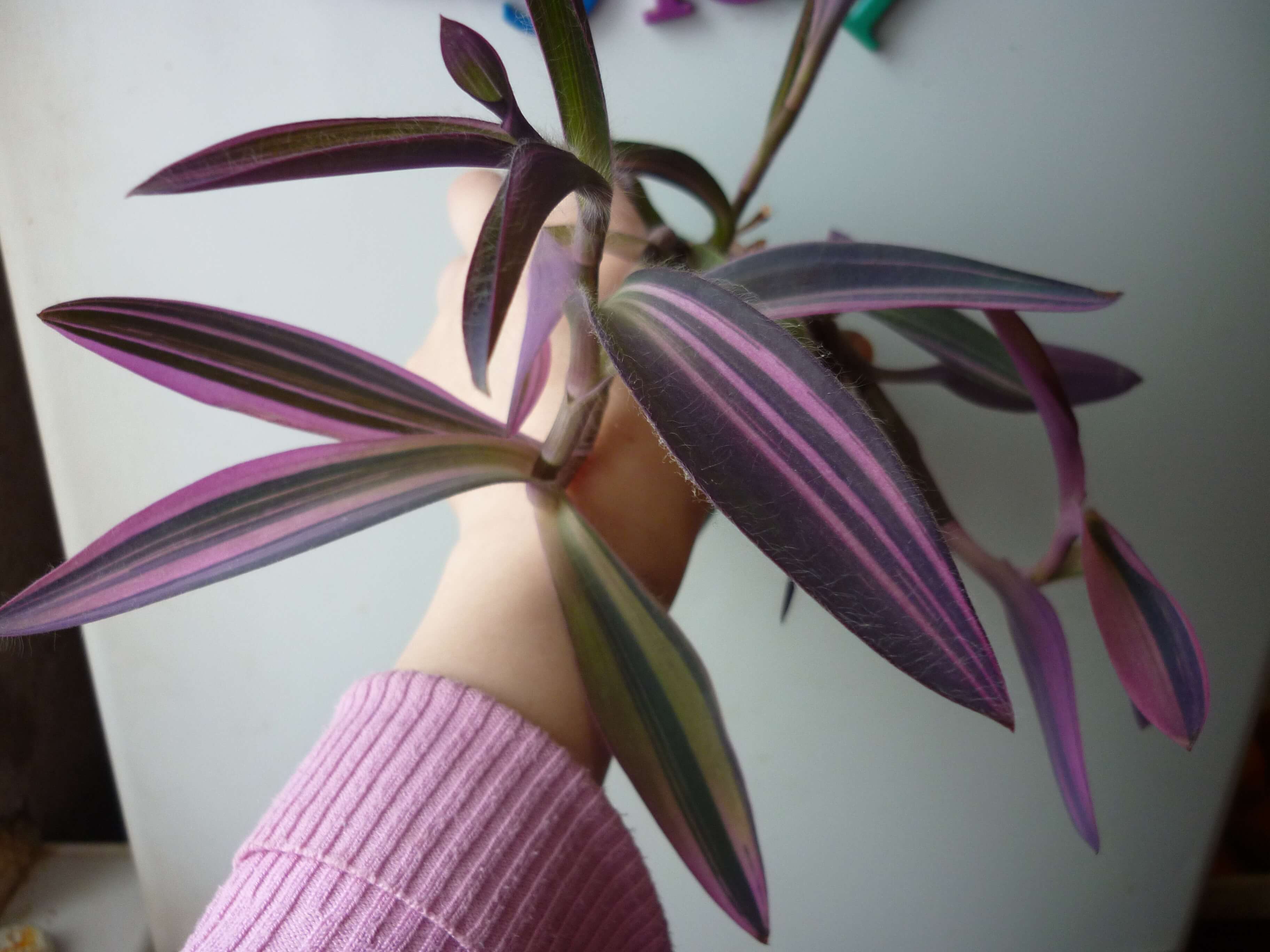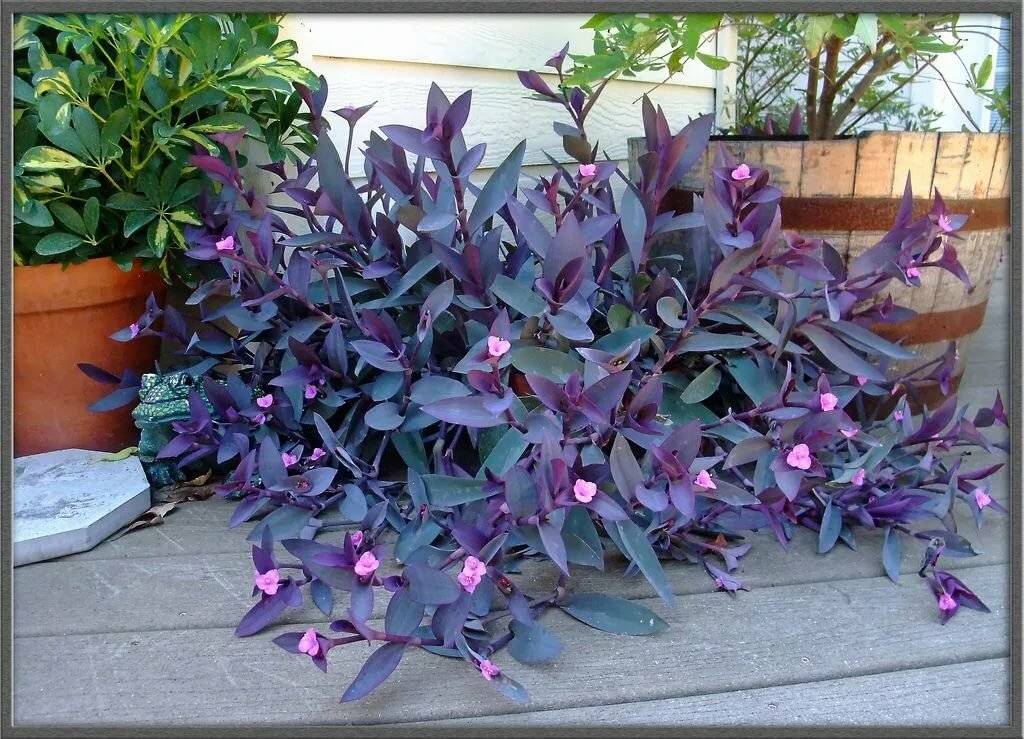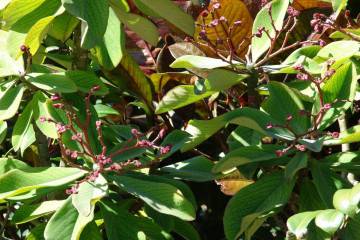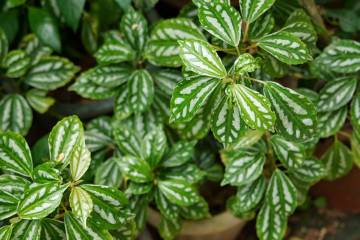Netcreasia purpurea - home care
Content:
This plant has several names. Setcreasia purple (purple) otherwise sounds like tradescantia purple. Sometimes the plant is called variegated meshcreasia.
It is perfectly cultivated at home in Russia. Moreover, the homeland of the plant is Mexico. In nature, it can be found if you find yourself in Eastern Mexico in the Gulf Coast region.
What does it look like, which family it belongs to
Setcreasia is violet in appearance. Included in the group of perennials. Plant from the Commelin family (commelinaceae). The adult species has fleshy shoots up to 1 m in length. Leaves with a smooth surface, on the outside are painted in a green-purple tone. The inner parts of the leaves are colored purple and have soft white hairs.
Leaves alternate one after another in a checkerboard pattern. Each 8 to 10 cm long as if wraps around the shoot. Purple netcreasia blooms for a long time, from mid-spring to late summer. This quality makes the plant especially attractive. During this period, delicate miniature pink inflorescences with 3 petals appear on the stems.
Features of home care
Setcreasia does not need special home care. This makes it a popular species suitable for beginner growers.
In the description of the features of caring for purpurea reticulum at home, you can add influencing factors, among which are lighting, temperature, watering, and other main components. Together, they create conditions for healthy color growth. The details of each are listed below:
- Temperature. In spring, summer, the color grows under the influence of room temperature in the region of 23-25 ° C degrees. In winter, when the day becomes shorter, the plant is placed in a room where the air temperature reaches 14-16 ° C. The culture is overwintered. Lower temperature readings pose a risk of death of leaves and shoots;
- Lighting. The plant needs good lighting. It loves bright, diffused light. If it is not enough, you can use a phytolamp, illuminating it 16 hours a day. Lack of light will change the tone of the leaves, making them green. In addition, the netcreasia will be devoid of flowering;
Only direct sunlight falling on it at noon in the summer heat can harm the flower. To prevent the plant from getting burns in the area of the leaf plates, it is shaded.
- Watering. Water the plant with settled water at room temperature. Watering is carried out abundantly, but taking into account the fact that the ground should be slightly moist, but not saturated with water. Overmoistening of the root system of the netcreasia causes the process of decay and, ultimately, the death of the flower. However, dryness of the soil is also unacceptable. When the soil is dry, leaves and shoots will quickly lose their elasticity and begin to dry out;
- Spraying. The flower needs high humidity, but spraying is not recommended. Brown spots may appear on the leaves. The solution is to install a container near the pot, into which wet pebbles or expanded clay are placed;
- Humidity. The flower needs moderate watering throughout the year. In spring and summer, the soil is moistened, starting from 2 times a week. In autumn, watering is brought up to 1 time in 7 days. The air humidity in the room where the flower grows should reach high values. In the summer, spraying is done in the room. It is performed carefully, trying to prevent the water from touching the leaves.Otherwise, white spots will appear on them, the process of decay will begin. In the cold period, artificial drainage is performed using an additional container and placing a flower pot in it;
- Priming. To grow reticulum, it needs to be in loose nutrient soil. Use a ready-made universal soil mixture or a soil composition prepared on their own, consisting of compost, turf, sand and charcoal;
- Top dressing. In the spring-summer period, from April to August, fertilizing is carried out twice every month using mineral fertilizers. With an increase in the number of dressings, the growth of the flower is faster and the branching increases. But, new shoots will have weakness, fragility, and leaf plates will have fading.
When and how it blooms
Indoor floriculture provides for the cultivation of two types of netcreasia: pale and purple.
Setcreasea purpurea, a perennial herb, has creeping, ascending shoots. The plant has several names, one of which is "tradescantia netcreasia" from the Kommelinov family. As you know, his homeland is Mexico. The specific place of growth is the alpine belt. A feature of the flower is the presence of upright or lying purple shoots.
Purple tradescantia netcreasia blooms from spring. At this time, the plant should be carefully looked after. He needs abundant watering and feeding.
Pruning
Before the onset of the vegetative period, the plant is pruned. Old stems are cut, leaving them no more than 3 cm in length. For the development of the bush, young shoots are periodically pinched.
How does it multiply
Purple reticulum multiplies in several ways:
- seeds. The seed is planted in wet sand. After disembarkation, the container is covered using polyethylene or glass. During the germination period, the sand is ventilated and moistened after drying;
- for reproduction, cuttings or side shoots are taken. With a sharp knife, carefully cut off the upper part of the stem (3-4 pieces), on which healthy leaves are located. Next, the slices are placed in water for rooting. You can use a soil mixture. The appeared roots of young plants in the amount of 3 to 5 pieces are transplanted into one pot;
- by dividing the root. This process is combined with a transplant. The plant is carefully dug out, being careful not to damage the roots. Then the root system is cleaned of the earth, washed in cool water. Next, the root is divided into parts, planting in different pots.
Transfer
With a wide growth of the root system, the flower is transplanted from a narrow pot into a larger pot. If this is not done, the roots will grow, but the flower itself will grow slowly.
The transplant takes place in the spring. A new soil mixture is being prepared or a ready-made composition is taken immediately. It is important to remember to carry out drainage first. Expanded clay or small pebbles should be laid on the bottom of the pot.
Possible growing problems
The plant is rarely infested with pests. This property makes the flower attractive to the home. However, if you start the color, there is a chance that aphids, spider mites or scale insects will appear on it. If there are signs of their stay, you should treat the damaged areas with a water-soap solution or use a tincture, which includes soap and alcohol.
In addition to pests, diseases such as black leg or gray rot are a threat to the plant.
Views
In addition to purple reticulum or otherwise Violet Tradescantia, reticulum reticulum is also famous for:
- striped netcreasia, growing in tropical regions of America, with creeping, slightly rising shoots;
- green netcreasia, growing in the same America, with climbing, falling shoots, elongated leaves;
- tradescantia pallida (tradescantia pallida) lives in the swamps of Central and South America. This species is accustomed to wet soil, likes good lighting. Once at home, it adapts easily and grows well even in the shade.
Purple netcreasia can be found in many homes where the owners are fond of home gardening. Caring for it is quite simple, and as a result, the netcreasia flower looks very beautiful, so it always easily becomes a decoration of the home interior.



















